7 SIMPLE GREEN-GLAMPING TIPS 🌱


Other perks include, supporting a local business, connivence and having an adept knowledge of the local flora and fauna, weather patterns, and terrain which can make your camping trip safer and more enjoyable.
Looking for a campsite that hosts from our tents? You can browse Instagram posts by our current trade customers here.

By purchasing from our second-hand sale, you are extending the life of the product and preventing it from ending up in a landfill. This reduces the demand for new products to be manufactured, which in turn reduces the environmental impact associated with production and transportation.
On the other hand, choosing a non-PVC 100% cotton Bell Tent is a great way to ensure that your camping gear is made from natural, sustainable materials. PVC (polyvinyl chloride) is a type of plastic that is commonly used in the production of tents, but it is not biodegradable and can release harmful chemicals when it breaks down. 100% cotton tents, on the other hand, are biodegradable and can be recycled, making them a more sustainable option.
Opting for one of the options above means you are taking steps towards becoming a more eco-friendly or "green" glamper. These practices can help to reduce waste, conserve resources, and minimise your impact on the environment.

Carbon neutrality refers to the state of balancing out the carbon emissions produced by a company or individual with an equivalent amount of carbon removal or offsetting. As of April 2023, Boutique Camping are carbon neuatral in the following areas; CN Workforce, CN Office, CN Warehouse, & CN incoming Freight. Companies that are carbon neutral have taken steps to reduce their carbon footprint, such as investing in renewable energy, energy-efficient technologies, and sustainable sourcing practices.
By choosing to shop with carbon-neutral companies, you can feel confident that the products you are purchasing have been produced with the environment in mind, and that the company is actively working to reduce its impact on the planet.
Don't forget, with every purchase you place with us you have x5 trees planted for just £1... add to your basket via the link here.

When planning your camping trip, you should research the train options available in your area and see if there are any stations near your campsite. Additionally, you may want to consider buying a trolley, wagon, or kit bag to help with the load.
For festivals or other events where trains may not be a feasible option, you can still reduce your impact on the environment by car sharing with friends or family. Car sharing helps to reduce the number of vehicles on the road and can help to reduce traffic congestion and emissions.
Alternatively, you can also check out coach options for festivals or other events. Coaches often have more eco-friendly engines than cars and can carry large groups of people, making them a more sustainable option.

Solar-powered equipment, such as solar panels, lights, and chargers, harness the power of the sun to generate electricity. They are a great option for camping because they are sustainable, portable, and easy to use. Solar-powered equipment can help to reduce your dependence on fossil fuels and can help to reduce your impact on the environment.
Similarly, battery-operated equipment is also a more eco-friendly option than electric equipment because it does not require electricity from the grid. When using battery-operated equipment, it's important to use rechargeable batteries to reduce waste and minimize your impact on the environment.
In general, when selecting camping equipment, it's important to look for items that are energy-efficient, portable, and durable. This can help to reduce your environmental impact and promote sustainable camping practices.

Collecting dead wood from fallen branches and using a wood-fueled stove is a great way to become a more eco-friendly camper.
Using a wood-fueled stove for cooking or heating your camping area is a more sustainable option than using an electric heater, which requires electricity from the grid. By using a wood stove, you are using a renewable resource that does not require fossil fuels or contribute to greenhouse gas emissions.
When collecting dead wood, it's important to follow Leave No Trace principles and only collect wood that is already on the ground. Avoid breaking branches off living trees, as this can harm the tree and disrupt the local ecosystem. Additionally, be sure to check the regulations in your camping area regarding collecting wood, as some areas may prohibit or restrict wood collection.
When using a wood burning stove, it's important to practice proper safety measures to prevent wildfires and minimise your impact on the environment. Always ensure that your stove is placed on a stable, non-flammable surface and keep a bucket of water or sand nearby in case of emergencies.
Avoid using a liquid white gas or petroleum fuel, to ignite that flame, be sure to use our eco-friendly fire starters!

Using a water heater attachment on your stove to heat water is a great way to become a more eco-friendly camper. By using a stove to heat water instead of an electric kettle or water heater, you are reducing your dependence on electricity and promoting more sustainable camping practices.
To sterilise water for drinking, you can boil it for at least one minute to kill any bacteria or viruses.
In conclusion, green glamping is not only an enjoyable way to spend time in nature, but also a responsible and sustainable way to camp. By choosing eco-friendly campsites, reducing waste, conserving water and energy, and using sustainable camping gear, we can minimize our impact on the environment and help to protect the natural world for future generations. Remember, every small step we take towards a more sustainable and responsible way of camping can make a difference. Let's continue to explore and promote green glamping practices, and inspire others to do the same. Together, we can create a greener and more sustainable future for camping and the planet.

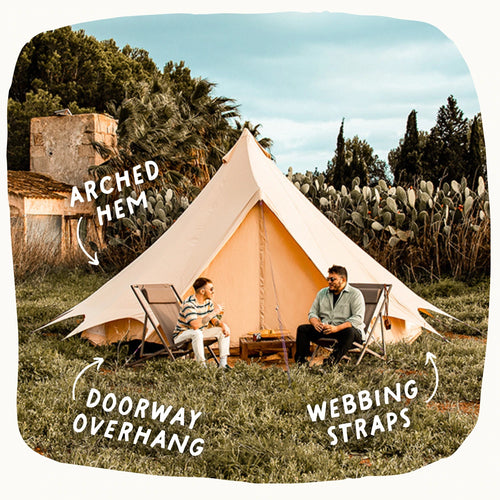

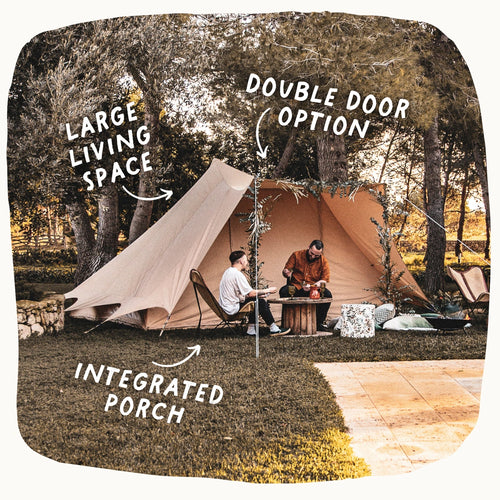

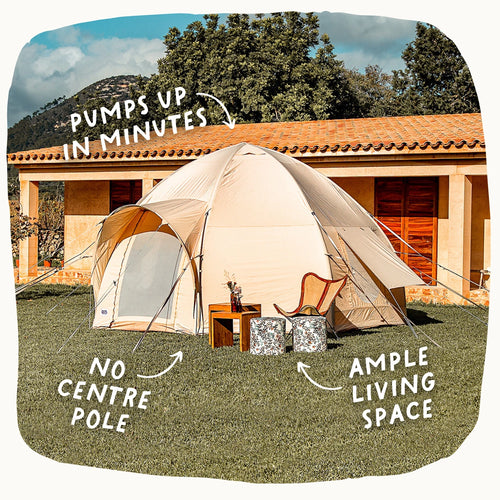
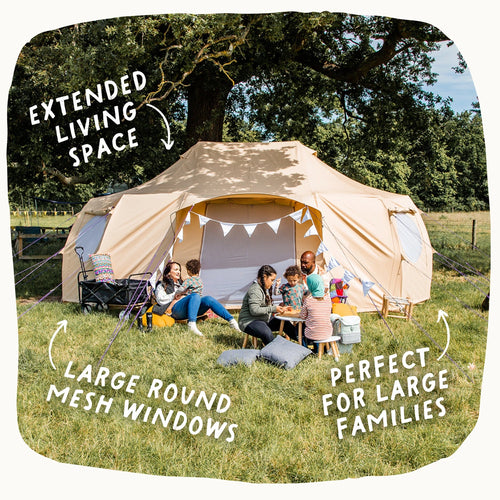
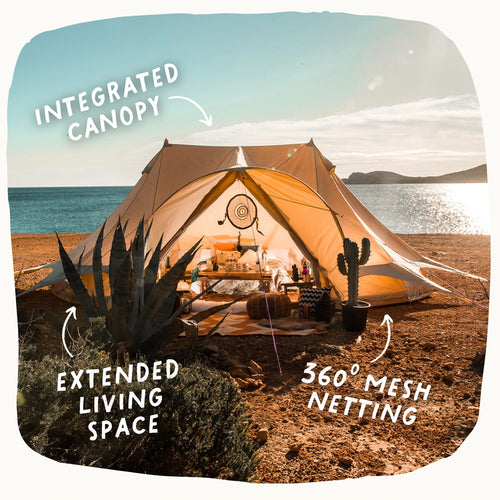




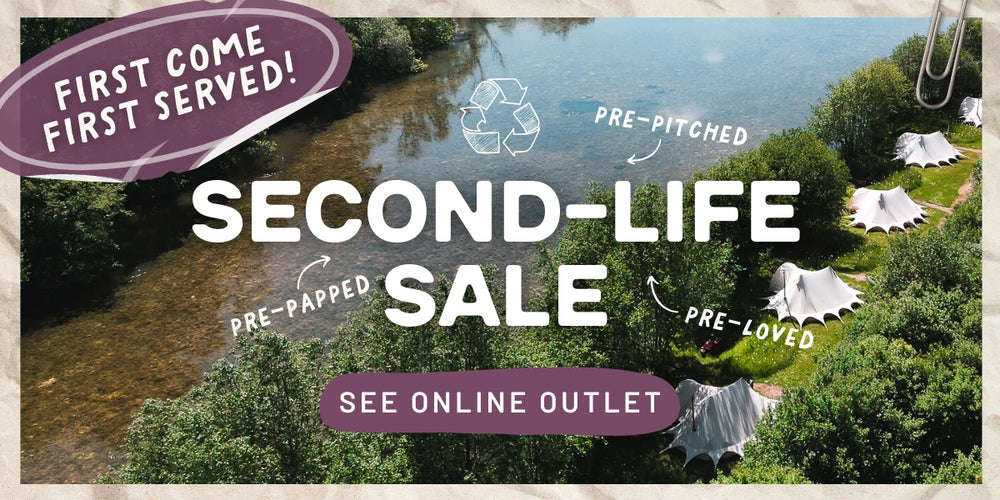


Leave a comment